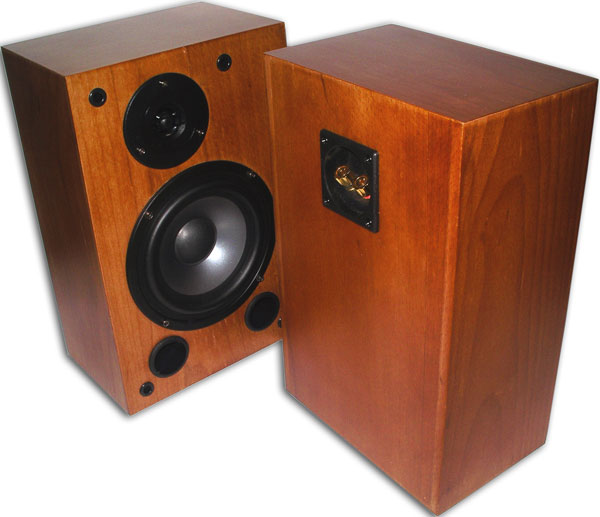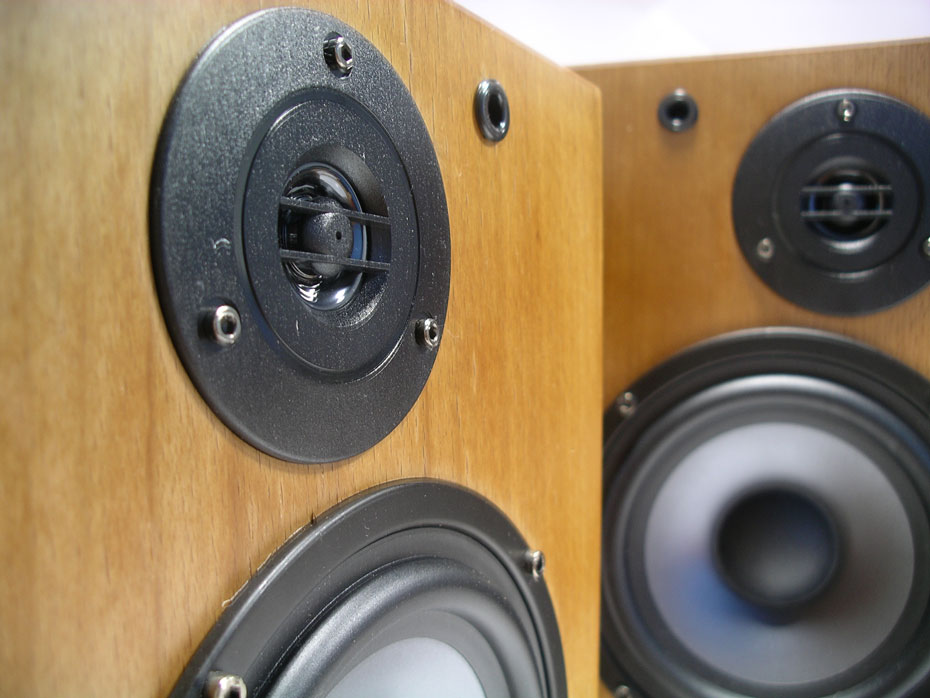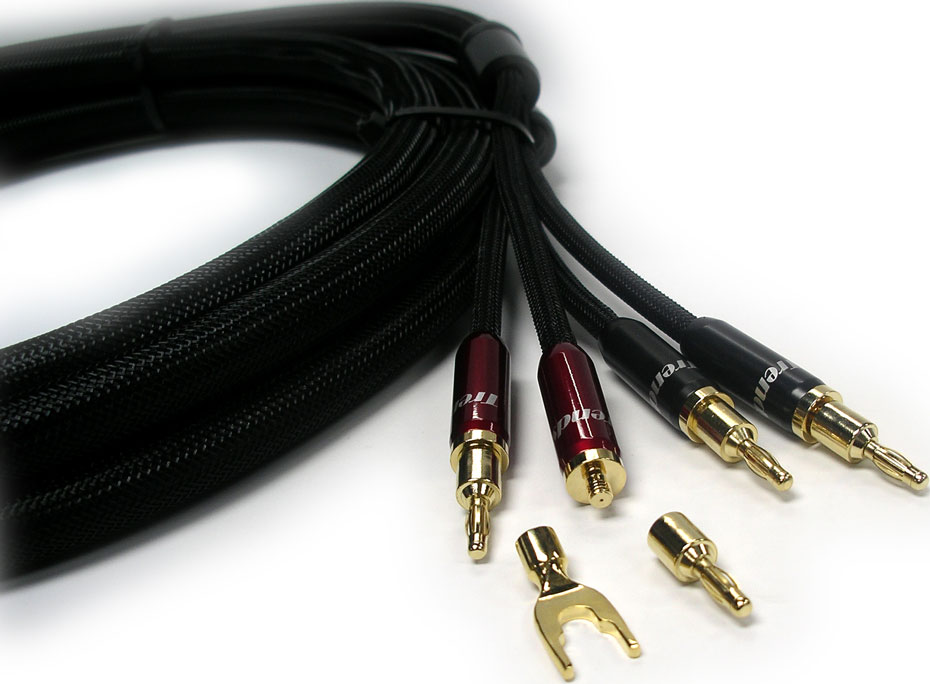Given that the Kandy is about three times the price of the Trends amps, I was and still am very impressed by these amplifiers. The Sonic Impact modified amp also hung in, and bettered $1,500 to $2,000 amplifiers. If you think about it, it should not be terribly surprising that the Trends amps compete. Let’s look at price. The Kandy is a full-function integrated amplifier with many inputs, with LCD screen, an impressive remote, in a large box and even has a phono stage. The PA 10 has no remote, no LCD screen, and only has one input with a selector for iPod. The Class T amplifiers do not offer much power and require no expensive transformers. So competing with integrated amplifiers in the $1,500 price range may not be as surprising as it initially seems. If you can live without the features, you get much higher sound quality than you would expect for the money.
I am one of those “I want my cake and eat it too” types. The TR-5 with ribbon tweeters is not likely designed for low power in mind – especially when you consider the speaker is part of a system that has the high-power Kandy integrated. So I decided to try a different set of speakers and a different CD player.
I decided to use my newly purchased Line Magnetic CD 215 CD player and Audio Note AX Two loudspeakers. The AX Two of course is designed by Audio Note, a company that typically designs 7- to 20-watt SEP and SET amplifiers. These speakers should be much easier for the Trends Audio Amplifiers. The Line Magnetic CD player is a tube CD player designed by a manufacturer that is heavily inspired by the original Western Electric tube designs. These components seem better suited to the Trends Audio amplifiers at least on paper, and proved to be in actual listening.
The Trends AN AX Two /Line Magnetic combo allowed some of the previous issues to drop away. The soundstage was larger here left to right and there was more articulation in the midrange. Even on music with heavy pop bass like “Turn the Radio Up” From Madonna’s MDNA album, I was able to play to fairly loud levels with no observable distortion. Obviously, there are limits but I could play to louder levels than I would need given the constraints of the speakers, room, and amplifier. Something tells me if you’re looking for 120 decibel levels you would not have made it this far in this review.
Audio Note AX Two speakers, around $700 US, are clearly designed for acoustic music and vocals and while they certainly do as well as any similar sized speakers with pop music, it was switching over to jazz that allowed me to get a better sense of the Trends amps. I was fortunate enough to audition the AX Two with a premium Audio Note system consisting of the Jinro amplifier, a copper version of the famous Ongaku, and arguably one of a handful of the world’s best-sounding amplifiers. The Trends isn’t in that league but it does better than a lot of gear where it counts. Using the same albums with both the AX Two and premium Audio Note system, and the AX Two with the Trends amps I consistently found that the Trends amps had less of everything and could not produce the goose-bump factor to the same degree. Having said that, The Trends amps always remained enjoyable and fatigue free and I can’t say that for many more expensive solid-state amplifiers.
On Sophie Milman’s Take Love Easy album, the Trends amps kept a solid grip on bass line. The vocal band had an always clear presence. The bass did have a one-note characteristic while the Jinro had considerably more nuance. The AX Two loves the midrange and tends to project the vocal band strong out into the room but shelving the treble down below the main band to avoid brightness. The Trends amps did a nice job of imaging, allowing instruments and voice to be identifiable in space rather than a blurred mess, like all of the receivers I’ve owned over the years. The Trends/AX Two/Line Magnetic combination commanded my attention and I found myself listening to albums straight through. At louder levels the sound would thicken up somewhat and things would become slightly confused where instruments would blur together and the bass would become slightly soft and mellifluous.
Voice again was particularly well realized with Loreena McKennitt’s “Caravanserai” from the album An Ancient Muse. Strings were a little harder than with premier systems and amplifiers like the Jinro or my Audio Note OTO. Even here though, the Trends amps avoided sound that could be described as bright. The Bass had plenty of weight but compared with better amplifiers the Trends was somewhat homogeneous across recordings.
A word about the PA 10 is in order. The 12AX7 tube can, of course, be rolled with more expensive and/or presumably better tubes so there is an upgrade path for those so inclined. The volume control is somewhat noisy (has a gritty sound) when you rotate it. This goes away after use or when the amp has warmed up. Speaking of warm up, I found that sometimes it would sound fine on turn-on, but at other times it would sound really harsh. After 30 seconds or so it would be fine. This is not an uncommon trait for tube designs so I would suggest a few minutes of turn-on time before serious listening.
Conclusion
As a system, the Trends Audio system is deceptive. It offers fine value and a small size for a desktop computer system in a small space. The limiting factor here is the speakers. The speakers seem to me to be aimed for a particular purpose – small size, computer set-ups, close to wall. They sound fine for the money, no question, but the amplifiers are the star pieces in this system. They performed well with much higher-end loudspeakers and as a result make the Trends system a nice starting system that allows the user to upgrade in stages.
Sure, there were some sonic omissions in resolution that better and much costlier systems could bring to the listening experience, but I kept looking at the fact that these amplifiers are each under $300 and with the price factored in, the quality of sound is utterly superb. I wish these amplifiers were around when I first started in the audio hobby because I would have been much further ahead than spending years with $2,000 receivers that made Beethoven as much fun to listen to as what you could find in the elevator at most shopping malls.
- ← Previous page
- (Page 2 of 2)






More information about the Trends CQ-500 OCC speaker cables will be appreciated. AWG, Geometry, Shielding, Cross-section picture, Measurements – Resistance, Inductance and capacitance, etc? Nothing much available on the web, including the manufacturer’s website,